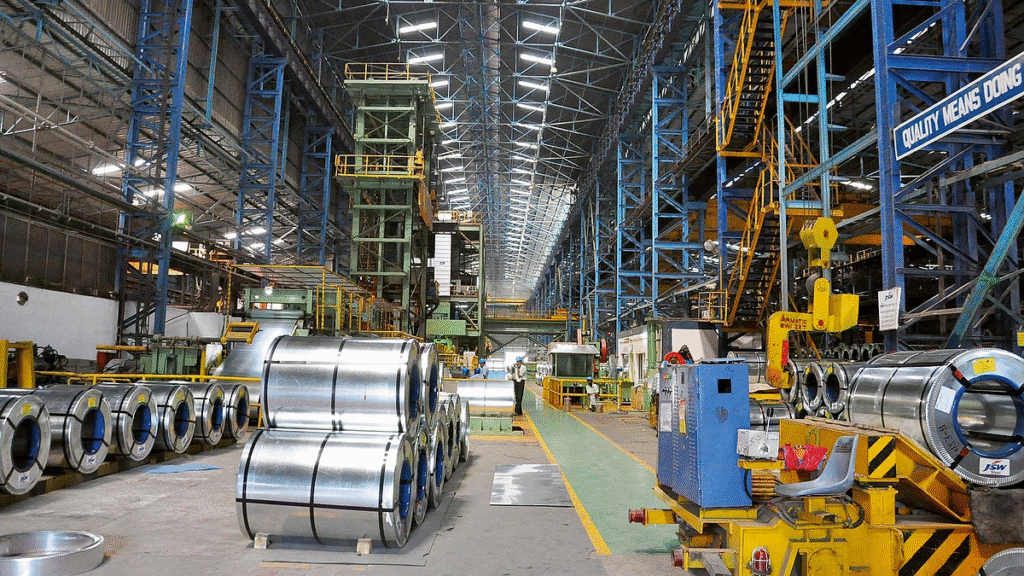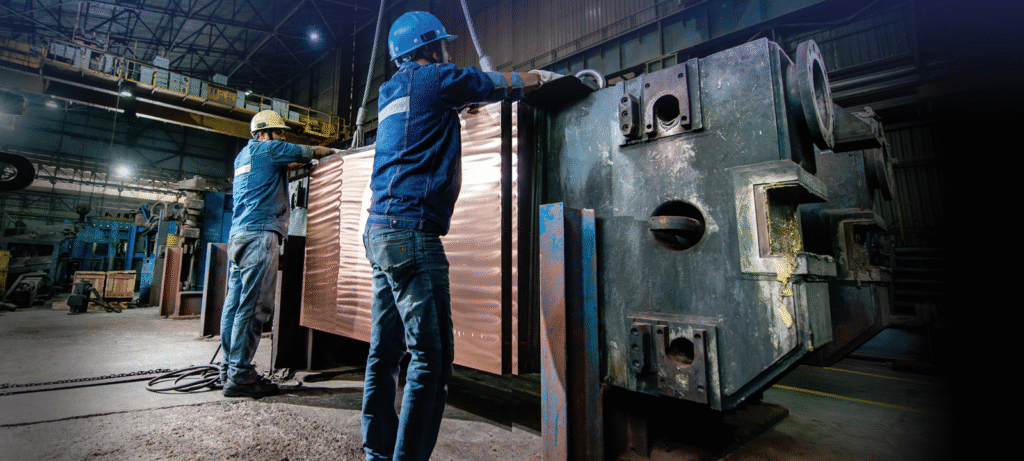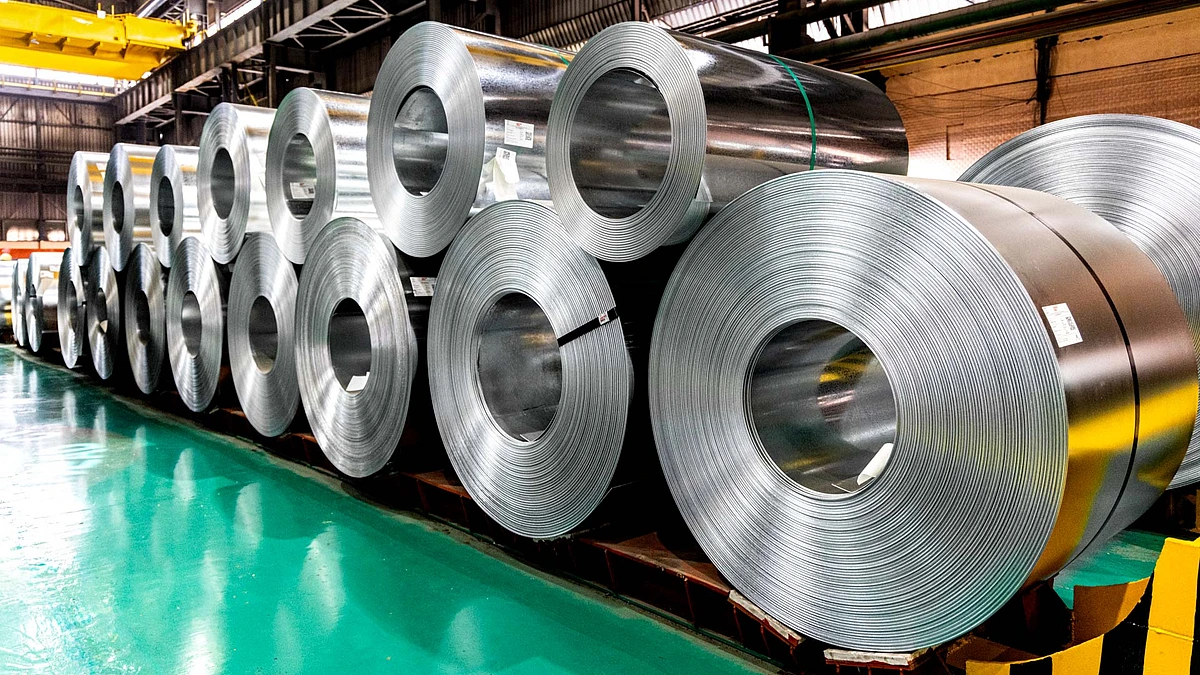
In a significant development that underscores the vulnerabilities of India’s domestic steel industry, JSW Steel, a leading name in the sector, has voiced concerns over the rising volume of steel imports from China and Free Trade Agreement (FTA) nations. This call for action highlights the potential risks these imports pose to India’s steel manufacturers and the overall industrial ecosystem. The issue is particularly critical as the nation strives for self-reliance and robust growth in its manufacturing capabilities under initiatives like ‘Make in India.’
The Challenge of Chinese Steel: A Global Oversupply Issue
China, the world’s largest producer and exporter of steel, has long leveraged its massive production capacity to dominate global markets. In recent years, however, a slowdown in domestic demand has forced Chinese manufacturers to seek international buyers more aggressively. For India, this has translated into a significant surge in Chinese steel imports, often at prices that undercut those of domestic producers.
JSW Steel has flagged this influx as a serious challenge, pointing out that Chinese steel products entering India are not just competitive but are also being sold at prices that make it nearly impossible for Indian companies to compete. This situation, often referred to as dumping, can distort market dynamics and jeopardize the sustainability of domestic steel producers.
India’s steel industry is already battling rising input costs, fluctuating demand, and the need for technological upgrades to stay competitive on a global scale. The flood of cheaper Chinese steel imports exacerbates these challenges, discouraging investments in local production and innovation.
The Role of Free Trade Agreements: A Double-Edged Sword
While FTAs are designed to foster bilateral trade by reducing tariffs and barriers, they have also become a loophole for countries to indirectly ship goods into India. JSW Steel’s statement emphasizes the risks associated with imports from FTA countries, which often enjoy tariff exemptions. These countries sometimes act as intermediaries for Chinese steel, further complicating India’s trade landscape.
The company’s concerns are rooted in the growing trend of “rerouted” imports—where Chinese steel is processed or relabeled in FTA nations before being exported to India. Such practices not only sidestep anti-dumping duties but also undermine India’s regulatory frameworks aimed at ensuring fair competition.
The Economic Implications of Unchecked Steel Imports
India’s steel sector has been a cornerstone of its economic growth, contributing significantly to infrastructure development, industrial expansion, and employment generation. However, the unchecked inflow of imported steel threatens to erode the competitive edge of domestic players.
JSW Steel’s warnings come at a time when the Indian government is setting ambitious targets for steel production. The National Steel Policy aims to boost production capacity to 300 million tonnes by 2030-31. Achieving this goal requires a stable and supportive market environment, which is undermined by the current import dynamics.
Moreover, the financial strain caused by cheap imports could lead to job losses in the sector, affecting millions of workers directly and indirectly dependent on the steel industry. This underscores the need for proactive measures to ensure that imports do not disrupt the delicate balance of supply and demand in the domestic market.
Government’s Role: Policy Interventions and Safeguards

JSW Steel’s call for vigilance is a wake-up call for policymakers to reevaluate existing trade practices and regulatory frameworks. The government has already taken steps to impose anti-dumping duties on certain steel products, but the company’s concerns suggest that these measures may not be sufficient.
Strengthening import monitoring mechanisms, revising FTA terms, and ensuring stricter enforcement of anti-dumping duties are some of the steps that can be taken to address the issue. Additionally, promoting research and development in the domestic steel sector can help Indian companies improve efficiency and reduce production costs, making them more competitive globally.
The Road Ahead: Balancing Trade and Domestic Growth
While international trade is essential for economic growth, it is equally important to protect the interests of domestic industries. JSW Steel’s warning highlights the need for a balanced approach that encourages fair trade while safeguarding the long-term viability of India’s steel sector.
In this context, collaborations between industry stakeholders and policymakers will be crucial. By aligning strategies and addressing the root causes of import-related challenges, India can create a resilient and competitive steel industry that supports its broader economic ambitions.
Understanding the Global Context of Steel Production
The issue of rising Chinese steel exports isn’t isolated to India alone. Across the globe, countries have raised concerns about China’s ability to dump excess steel into foreign markets at rates that undercut local producers. This practice not only threatens domestic industries but also leads to imbalances in global trade.
The European Union, the United States, and Japan have all implemented stricter tariffs and anti-dumping measures to mitigate the effects of Chinese steel imports. India’s approach, however, must take into account its unique position as a growing economy with ambitious industrial goals. By adopting a nuanced strategy, India can protect its domestic interests while remaining a key player in the global steel market.
The Environmental Angle: Another Layer of Complexity
Another dimension of the steel import debate lies in the environmental impact. Chinese steel manufacturing is often criticized for its carbon-intensive processes, which are not always in line with global sustainability goals. Indian steelmakers, on the other hand, are increasingly adopting eco-friendly technologies to reduce their carbon footprint.
Allowing an influx of cheaper, less sustainable Chinese steel could inadvertently discourage domestic players from pursuing green initiatives. JSW Steel’s call for vigilance aligns with the broader need to ensure that India’s growth is not achieved at the expense of environmental sustainability.
Collaboration Across Stakeholders: A Holistic Solution
Addressing the challenges posed by steel imports requires a concerted effort from all stakeholders, including the government, industry leaders, and trade bodies. Creating a platform for regular dialogue can help identify gaps in existing policies and develop actionable solutions.
For instance, the establishment of a dedicated task force to monitor steel imports, analyze market trends, and recommend policy adjustments could be a game-changer. This task force could also explore opportunities for India to expand its export footprint, leveraging its strengths in quality and sustainability.
Empowering Domestic Producers Through Innovation
Innovation holds the key to the long-term competitiveness of India’s steel industry. Investments in advanced manufacturing technologies, automation, and digitalization can enhance efficiency and reduce production costs. Additionally, fostering partnerships between academia and industry can drive research and development efforts aimed at creating next-generation steel products.
The government’s role in this context is to provide financial incentives and create an ecosystem that encourages innovation. By supporting initiatives like technology incubation centers and skill development programs, India can empower its steelmakers to compete on a global scale.
Conclusion: A Call to Action
JSW Steel’s warnings serve as a crucial reminder of the challenges and opportunities that lie ahead for India’s steel industry. By addressing the risks posed by imports from China and FTA nations, India can safeguard its domestic producers while paving the way for sustainable growth.
The path forward requires a balanced approach that combines regulatory measures, industry collaboration, and a commitment to innovation. With the right strategies in place, India can achieve its vision of becoming a global leader in steel production, contributing to its broader economic and industrial ambitions.

